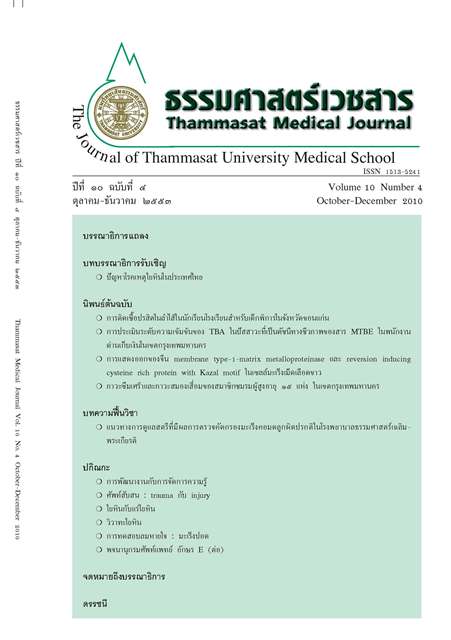Intestinal parasitic infections in students at a school for handicapped children in Khon Kaen Province, Thailand
Keywords:
Intestinal parasitic infections, Handicapped childrenAbstract
We conducted a cross-sectional study of intestinal parasitic infections among handicappedschool children to obtain data concerning prevalence and associated factors. The resultsof stool examination showed that 20 of 52 (38.46%) specimens were positive for one or twoparasite species. Protozoan parasites were most frequently found (36.54%). The species ofintestinal protozoan parasites were Endolimax nana, Entamoeba coli, Blastocystis hominis and Giardia lamblia. Coinfection with Blastocystis hominis and Endolimax nana were common. Taenia sp. was the only helminthic parasite found. There was no statistically significantcorrelationship (p>0.05) between prevalence and any of the investigated factors (educationlevel, sex, handicap level and hand washing before meal). In this study, all of the handicappedchildren were shoe wearers. Data from this investigation showed a high prevalence ofintestinal protozoan infections among these children, which could directly affect their healthstatus. Therefore, control and prevention strategies for intestinal parasitic diseases in handicappedschool children and other school children are needed.
Key words: Intestinal parasitic infections, Handicapped children


